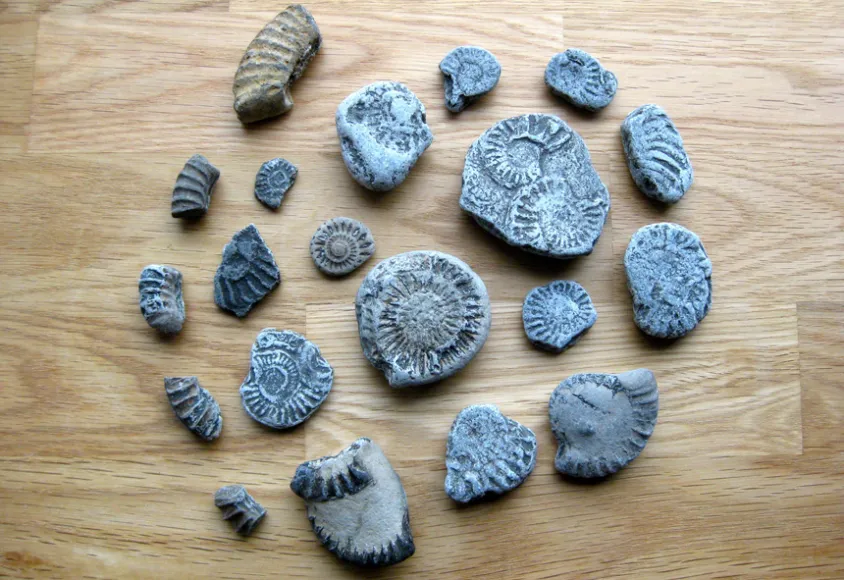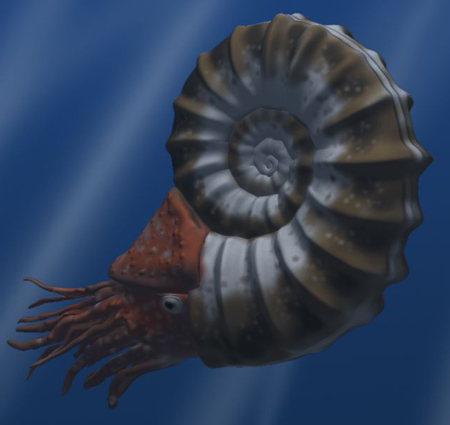An ammonite adventure on the Jurassic Coast

Fossil ammonites are a common find along the beach in Lyme Regis, England.
S. Zielinski
- More than 2 years ago
If you’ve ever been in a shop that sells fossils — the natural history museum gift shop, the nature store in the mall, and so on — you’ve probably seen an ammonite. Its chambered coils make a distinct shape in the rock, easily recognizable as something special. The modern nautilus has a similar design, but ammonites are far older, having lived around 340 to 65 million years ago, at which point these marine invertebrates went extinct along with the dinosaurs.
This week I’m particularly interested in ammonites because I’m fossil hunting with a friend along the Jurassic Coast in England. This region is special because fossils are easy to find: They wash out of the cliffs and onto the beach where they are free for anyone to collect, as long as you follow the rules. Earlier this week, we spent an afternoon scouring a rocky beach in Lyme Regis looking for bits of rock that are the fossilized remains of creatures that had lived some 195 to 200 million years ago. Mostly what we found were ammonites.

More specifically, we found the fossilized remains of the ammonites’ shells. Like a nautilus, the animals had fleshy bodies that peeked outside their shells — tentacles for catching food, a beak like that of its modern-day relative, the squid, and eyes that probably gave them good vision — but the soft parts of an animal rarely become fossilized. There are lots of fossilized ammonite shells here in Lyme Regis because they were numerous in their heyday. But I suspect that their distinct shape also makes them particularly easy to spot and collect. At least it did for us.
The squishy part of the animal’s body only filled about half of the animal’s shell. The rest of the coil contained a series of chambers that would have been filled with gas and water. By controlling the ratio of gas to fluid, an ammonite could control its buoyancy and its place in the water column. Locomotion would have been by way of jet propulsion, although this wasn’t entirely practical, as the animals could only propel themselves through the water backwards.
The fossils I collected with my friend are pretty worn and not scientifically valuable, but better fossils in natural history collections are revealing new details about the various species of these ancient marine invertebrates. In a 2011 study in Science, for instance, researchers led by France’s national natural history museum made a three-dimensional X-ray of an ammonite found in South Dakota. That analysis revealed the remains of a small shrimplike crustacean and a larval gastropod near the ammonite’s teeth. “Finding these dinner fragments within the ammonite’s mouth strongly suggests that it ate small prey floating in the water,” Alexandra Witze wrote in Science News.
That prey is a potential clue as to the cause of the ammonite’s final demise, Witze notes in her article. The event that caused the mass extinction at the end of the Cretaceous 65 million years ago took out a lot of plankton and associated small animals. The ammonites may have been left with no food, which would have led to their extinction. “In contrast, the related cephalopod known as the nautilus survived the extinction, perhaps because it can eat larger prey and a wider variety of food,” Witze wrote.
I’m not sure what species of ammonite my friend and I collected, but there were many during the time when the creatures filled the oceans. Ammonite species are so distinct and so numerous, and they had large geographical ranges, that geologists can use to date layers in rock. It’s so useful as a technique that some rock layers are even named for ammonites.







